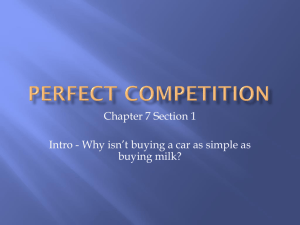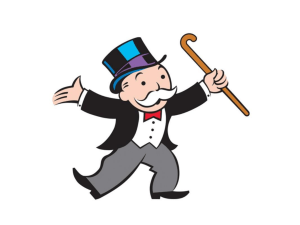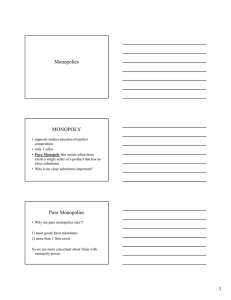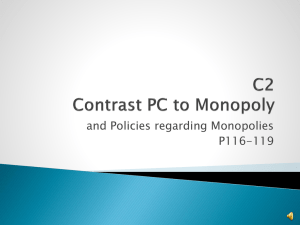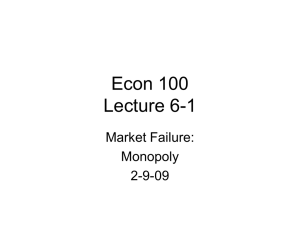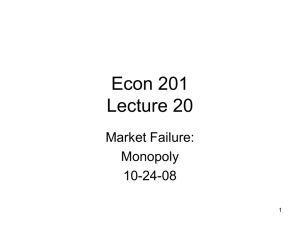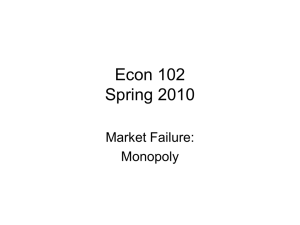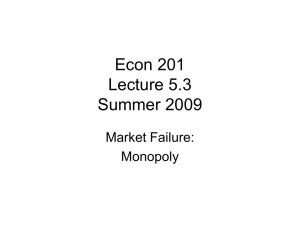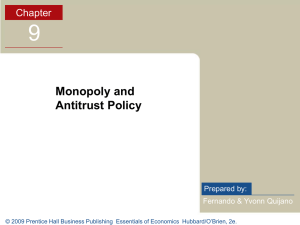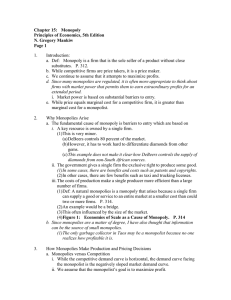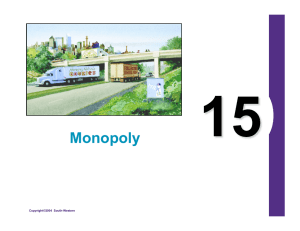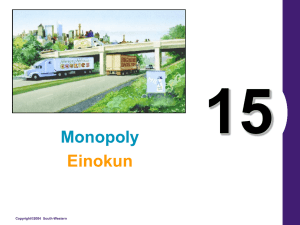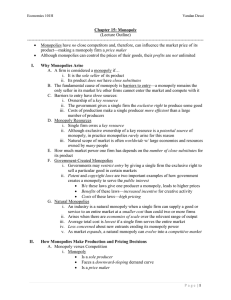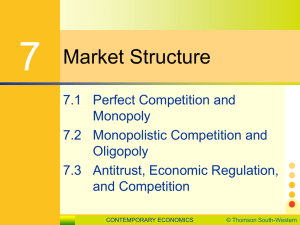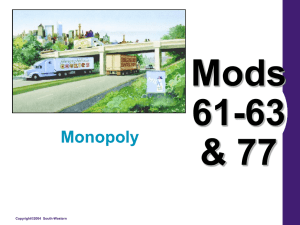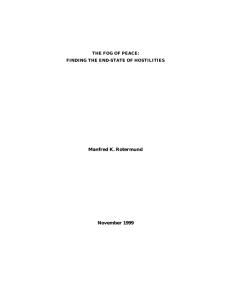IB Economics - Ch 9 How do we model monopolies?
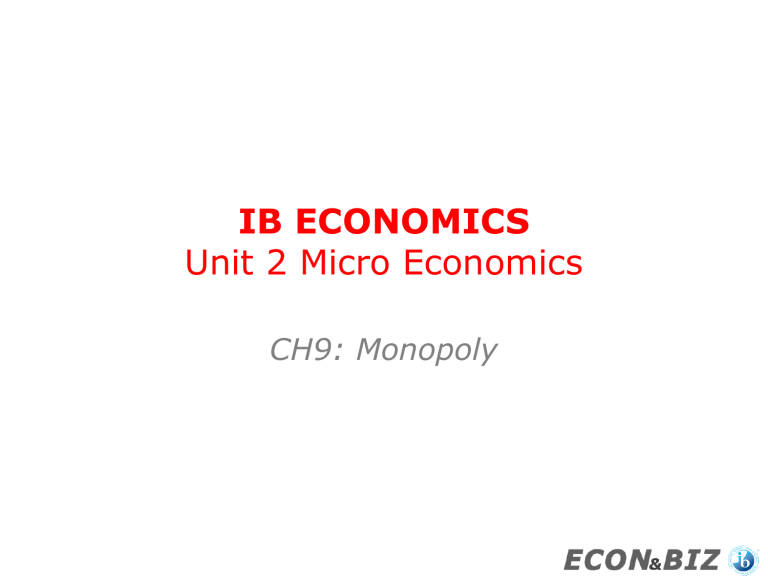
IB ECONOMICS
Unit 2 Micro Economics
CH9: Monopoly
source: http://news.bbc.co.uk/2/hi/business/8354491.stm
| 11th Nov 2009
Assumptions of the model
• There is one firm producing the product, the firm therefore is the industry
• Barriers to entry and exit exist in the market which maintains the monopoly into the LR
• Due to the barriers to entry monopolies can enjoy abnormal profits in the LR (or suffer losses in the LR)
Sources of monopoly power/barriers to entry
• Economies of scale
• Natural monopolies
• Legal barriers
• Brand loyalty
• Anti-competitive behaviour
Profit maximisation under monopoly
Loss minimisation under monopoly
Are monopolies efficient?
• Not productively efficient
– But producing more for less?
• Not allocatively efficient
• Possibly dynamically efficient
Welfare loss of Monopoly
More QD at a lower P than PC with abnormal profit
Are monopolies in the public interest?
Possible advantages
• Economies of scale and
MES
• Research and development
• Dynamic efficiency
• International competitiveness
• Price discrimination
• Improved quality
• Cross subsidisation
• Less choice may be better?
• Creative destruction
Possible disadvantages
• Diseconomies of scale
• Allocative efficiency
• Regressive effects
• X inefficiency
• Collusion
• False choices
Evaluation
Extended Reading
• Sloman J., Essentials of Economics 4 th Ed.
– P119 to 127
• There are also a number of new books in the library which will be excellent reading for this section of the course




